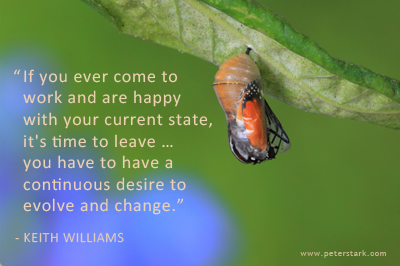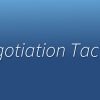Leading Change
How Constant Change Can Bring You Success
If you’re happy with the way everything currently is with your team or organization, and you don’t have plans to raise the bar, create new processes or products, improve services, or build an even stronger team, then it’s probably a good time for you to leave. If your organization hires the right person to replace you, the next person will most likely raise the bar with higher goals and lead continuous improvement and innovation. One of the top two most significant differences in our Best of the Best Benchmark, when compared to 300 organizations in our overall benchmark, is the Best of the Best are significantly better at leading continuous improvement and innovation in their teams and organization.
The Best of the Best organizations do things differently, especially when it comes to change and innovation; here’s what they do:
- Honor the past, then build a bridge to the future: When new managers come into an organization, some have a need to tell everyone how good the organization they came from really was and how their mission in life is to fix all the wrongs of the new organization. When it comes to leading innovation and change, this strategy has a high chance of backfiring. When managers put down their new team, the team members ask themselves two questions: “If that old company was so good, why did you leave?” And, “Why don’t you leave right now and go back there?” When team members have their past trashed by a new manager, they will dig their heels in to protect the past. Thoughts that cross their minds are usually along the lines of, “I was here before you started and I’ll be here after you leave.” The best strategy for managers is to honor the past and lead a discussion about what a new vision with even better results could look like.
- Listen to your customers and take action on the feedback: Listen to and watch your customers. If you listen to feedback, and act on their feedback, it will help you to continuously raise the bar. There are two exceptions to this rule. The first exception to this rule is when the customer wants to do something that isn’t in their best interest and they don’t have the necessary experience or knowledge. The second example is the Steve Jobs and Henry Ford syndrome. If Henry Ford had listened to his customers, he would have started to breed faster, stronger horses. If Steve Jobs had listened to his customers and the music industry, rather than creating an iPod or iPhone, he might have created a higher quality CD. When you know what the customer is going to need before they know, you don’t need to listen.
- Set goals that are focused on continuous improvement: Create an environment where everyone is focused on, as Tim Duncan puts it, “Good, better, best. Never let it rest. Until your good is better and your better is best.” Yes, sales revenue, profits, quality, efficiencies, staffing ratios, staff education, and innovation need to improve each month. This may lead to some people saying, “No matter what we do, you’re never happy.” On the contrary, great leaders are happy and have gratitude for what is accomplished each day. But, great leaders are great leaders because they continuously improve the condition of their stakeholders.
- Set milestones and deadlines: Deadlines are simple to write but not easy to implement. Innovation and continuous improvement take strategic thinking time. If you give the average person a strategic thinking task at the same time as you give them an operational task to do, the average person will do the operational task first. Operational tasks are routine, usually easy, and they give you immediate gratification. Another task you can cross off your list. However, that’s not the case with strategic and innovative thinking. They almost always take longer than operational tasks and they are harder to implement. If it was easy, every manager and organization would spend more time on innovation and continuous improvement. Without deadlines, innovative and continuous projects can take forever to implement.
- Get excited about cool ideas and working on cool stuff: A great question for you to answer is, “What are you working on right now that is innovative or really cool?” What we have found is that the leaders and team members who can quickly answer that question almost always are working for organizations in our Best of the Best Benchmark. Are you working on a new product or service or significantly improving an existing one? Are you learning something new that will allow you to really leverage your strengths? As a leader, we all need a “cool stuff” list. Cool stuff means you’re moving forward. It’s hard to follow a leader who isn’t out in front, leading the team.
- Measure the hard, tangible results: For example, check in and see where you’re at in terms of quality service standards, profitability, and meeting deadlines. These results count! It’s important to make sure that everyone is crystal clear on the goals and communicate the team’s progress in achieving the goals.
- Take pride in your failures: When it comes to innovation, some stuff is going to make you and the team look brilliant, while other projects won’t be so successful. Thomas Edison was right when he said, “’I have not failed. I’ve just found 10000 ways that won’t work.” In our office we have a closet full of books that we wrote in the 1990’s that didn’t sell. Nine books later, I know that some of our books hit it big while others, my mother wouldn’t even buy or read. To be innovative, you have to be willing to take pride in your failures. Our advice, fail more often.
- Share the anchors with your best competitors: Some team members refuse to change and lack a desire to continuously improve. The big question here is, “Is it ok that they just do their job?” The issue is that, in today’s business environment, we can no longer afford to pay an employee who isn’t motivated to continuously raise the bar and improve processes, services, and products. If they’re resistant at first, coach them, counsel them, and train them. If they’re still resistant to making changes, share them with your best competitor to slow down or screw up someone else’s strategic plan.
- Recognize and celebrate: It’s important to be able to celebrate each day’s success and to recognize the people and team who have contributed to the implementation of innovation and cool stuff. But here’s a unique twist: it’s also important to recognize the team member who tried something innovative or new that didn’t work out. Without a culture where people can take pride in an innovative failure, and still be motivated to try and improve something else, they stop trying. What you are left with is a culture where people do their jobs, but have no desire to radically improve the team.
Following these steps will help prevent your team from being left behind by making continuous change the norm.
Do you have any other tips on creating a culture rich in continuous change?











Leave a reply